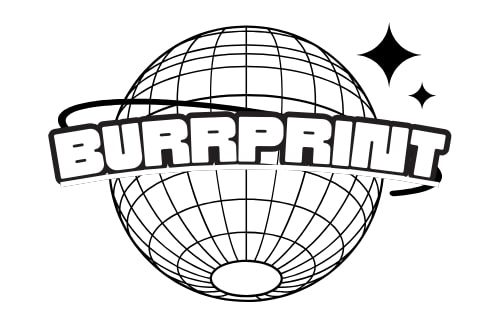To optimize your ecommerce SEO successfully, you must navigate through a maze of strategic choices and technical considerations. From uncovering the right keywords to fine-tuning your website's performance, every step holds the key to accessing higher visibility and increased traffic. Explore the intricacies of keyword research, on-page optimizations, mobile responsiveness, and content creation to forge a path that leads to SEO success. Each element plays an essential role in shaping your ecommerce site's digital footprint and propelling it towards the coveted top ranks of search engine results.
Key Takeaways
- Conduct keyword research aligned with business goals and competitor analysis for market insights.
- Optimize meta tags, title tags, and content with strategic keyword placement.
- Prioritize mobile optimization with responsive design and faster loading times.
- Implement schema markup for rich snippets and improved click-through rates.
- Enhance SEO with effective link building tactics like influencer partnerships and social media outreach.
Keyword Research Strategies
To enhance your ecommerce SEO strategy, begin by meticulously crafting keyword research strategies that align with your business goals and target audience. Conducting competitor analysis is essential in identifying gaps in the market and understanding the keywords your competitors are ranking for. This insight can help you discover valuable long tail keywords that have lower competition but higher intent from potential customers.
When performing competitor analysis, focus on the keywords driving organic traffic to your competitors' websites. Tools like SEMrush or Ahrefs can provide detailed data on your competitors' top-performing keywords, allowing you to uncover opportunities for your own SEO strategy. Look for long tail keywords that are specific to your products or services, as they often have higher conversion rates due to their intent-driven nature.
On-Page SEO Techniques
Implementing effective on-page SEO techniques is essential for boosting your website's visibility and ranking on search engine results pages. When it comes to on-page SEO, optimizing meta tags and title tags is vital. Meta tags provide information about your webpage to search engines, influencing how your content is indexed and displayed. Title tags, on the other hand, play a significant role in determining your page's relevance to search queries. Here is a breakdown of key on-page SEO techniques:
| On-Page SEO Techniques | Description | Importance |
|---|---|---|
| Meta Tags Optimization | Enhancing metadata | Improves search indexing |
| Title Tags Importance | Highlighting page relevance | Increases click-through rates |
| Heading Structure | Organizing content | Enhances readability |
| Keyword Placement | Strategic keyword usage | Boosts search visibility |
| Image Optimization | Optimizing image tags | Improves user experience |
Mobile Optimization Tips
To optimize your ecommerce site for mobile, focus on speeding up mobile loading times, as this can greatly impact user experience and search rankings. Make sure your website is optimized for mobile-first indexing, ensuring that it is easily accessible and navigable on mobile devices. Additionally, prioritize responsive design to create a seamless and user-friendly experience across various screen sizes and devices.
Speed up Mobile Loading
Boost your mobile site's loading speed by optimizing images and minifying code for improved user experience and SEO performance. Implement browser caching techniques to store webpage resources on a user's device, reducing load times for returning visitors. Consider adopting Accelerated Mobile Pages (AMP) to create faster-loading versions of your web pages. Utilize lazy loading images to defer the loading of non-essential images until they are about to appear on the user's screen, enhancing initial load times. In addition, minify CSS/JS files by removing unnecessary characters like extra spaces and comments, streamlining file sizes for quicker loading. These steps can greatly enhance your mobile site's performance, leading to better user engagement and higher search engine rankings.
Optimize for Mobile-First
For peak performance and visibility, prioritize mobile optimization to enhance your ecommerce website's SEO strategy. Mobile user experience plays a critical role in engaging customers and driving conversions. Guarantee that your site is easy to navigate on mobile devices, with clear menus, fast loading times, and optimized images. Focus on responsive design to adapt seamlessly to various screen sizes. Improve conversion rate optimization by simplifying the checkout process on mobile, reducing form fields, and enabling guest checkout. Utilize mobile-specific features like click-to-call buttons and location-based targeting to enhance user experience. Regularly test your site on different mobile devices and browsers to identify and fix any issues promptly, ensuring a seamless mobile experience for your customers.
Ensure Responsive Design
With mobile optimization at the forefront of your ecommerce SEO strategy, ensuring responsive design is paramount for enhancing user experience and driving conversions. A responsive design adapts seamlessly to various screen sizes, providing a consistent and user-friendly experience across devices. By prioritizing user experience, you can reduce bounce rates and increase engagement, ultimately leading to improved conversion rates. Mobile users expect fast-loading pages and easy navigation, both of which can be achieved through responsive design. Search engines also favor mobile-friendly websites, positively impacting your SEO performance. Hence, optimizing your ecommerce site with a responsive design is not just about aesthetics but directly impacts your bottom line by improving user satisfaction and boosting conversion rates.
Content Creation Best Practices
When optimizing your ecommerce site's SEO, focusing on content creation is essential. To enhance your strategy, consider implementing keyword research tips, such as utilizing long-tail keywords and integrating them seamlessly into your content. Image optimization strategies and internal linking methods can further boost your SEO efforts by improving user experience and increasing your site's visibility to search engines.
Keyword Research Tips
To enhance your content's visibility and relevance in search engine results, prioritize conducting thorough keyword research for your ecommerce website. Begin by identifying long tail keywords specific to your products or services. Utilize tools for competitor analysis to understand which keywords are driving traffic to your competitors. Incorporate these insights into your content strategy to stay competitive. Additionally, consider optimizing for local SEO to target geographically relevant keywords. With the rising trend of voice search, adapt your keyword research to include more conversational phrases that people may use when speaking into their devices. By staying updated on emerging search trends like voice search optimization, you can tailor your keyword strategy effectively for maximum impact.
Image Optimization Strategies
Implementing effective image optimization strategies is paramount for enhancing the visual appeal and performance of your ecommerce website's content. To boost your SEO, utilize file compression techniques to reduce image sizes without compromising quality. Incorporate descriptive alt text optimized with relevant keywords for better accessibility and search engine indexing. Consider implementing image lazy loading to improve page loading times by only loading images when they come into view. Additionally, create an image sitemap to help search engines discover and index your images efficiently. By employing these tactics, you can enhance user experience, increase site speed, and improve your website's visibility in search engine results, ultimately driving more traffic and potential conversions.
Internal Linking Methods
For essential content creation best practices, internal linking methods play a significant role in enhancing your website's SEO performance and user engagement. When optimizing internal linking architecture for ecommerce sites, focus on anchor text optimization to improve the relevance and visibility of your pages. By using descriptive and keyword-rich anchor texts, you can guide both users and search engines to understand the context and importance of linked pages. This not only helps in spreading link equity across your site but also enhances the overall user experience by providing easy navigation and access to related content. The SEO benefits of a well-structured internal linking strategy can lead to increased organic traffic, higher search engine rankings, and improved conversion rates for your ecommerce website.
Technical SEO Considerations
Taking into consideration the technical aspects of SEO in your ecommerce strategy is essential for maximizing online visibility and driving organic traffic to your store. When focusing on technical SEO considerations, keep in mind these key points:
- Server Response: Guarantee that your server response times are optimized to provide a seamless user experience. Fast-loading pages contribute to better rankings and improved user satisfaction.
- Canonical Tags: Implement canonical tags across your website to avoid duplicate content issues. Canonical tags help search engines understand the preferred version of a page, consolidating ranking signals to the desired URL.
- Structured Data Markup: Incorporate structured data markup to provide search engines with additional context about your products and content. This can enhance your chances of appearing in rich snippets and other SERP features, increasing your click-through rates.
Ecommerce Site Speed Optimization
To enhance your ecommerce site's performance and user experience, prioritize optimizing site speed for improved search engine rankings and customer satisfaction. Site speed analysis is vital in identifying areas for improvement. Conduct a thorough evaluation using tools like Google PageSpeed Insights or GTmetrix to pinpoint loading bottlenecks. Look into optimizing images, leveraging browser caching, and minimizing server response times to boost performance. Additionally, prioritize performance optimization by compressing files, reducing redirects, and enabling browser caching to enhance the overall speed of your ecommerce site. Implementing a content delivery network (CDN) can also help distribute content geographically, further improving loading times for users worldwide. Remember, a faster site not only pleases search engines but also keeps customers engaged and more likely to convert. By focusing on site speed analysis and performance optimization, you can create a seamless shopping experience that drives traffic and boosts conversions.
Schema Markup Implementation
Implementing schema markup on your ecommerce website can greatly enhance your search engine visibility and click-through rates. By utilizing structured data, you provide search engines with more context about your products and services, leading to improved SERP display and user engagement. Here are three key advantages of incorporating schema markup:
- Rich Snippets Benefits: Schema markup enables your website to display rich snippets in search results, such as star ratings, pricing information, and product availability. This enhanced presentation not only attracts more attention but also establishes credibility and encourages users to click through to your site.
- Structured Data Advantages: With structured data implemented through schema markup, search engines can better understand the content of your pages. This can result in higher rankings for relevant search queries, increased organic traffic, and a better overall user experience on your ecommerce platform.
- Enhanced Click-Through Rates: Rich snippets generated by schema markup can lead to higher click-through rates as users are more likely to click on results that provide detailed information upfront. This can ultimately drive more qualified traffic to your online store and boost conversion rates.
Effective Link Building Tactics
In optimizing your ecommerce SEO strategy, incorporating effective link building tactics is essential for boosting your website's authority and driving organic traffic. Link building involves obtaining hyperlinks from other websites to your own, signaling to search engines that your site is a valuable resource worth referencing. Utilizing influencer partnerships and social media outreach are two potent tactics that can greatly enhance your link building efforts.
When it comes to influencer partnerships, collaborating with influencers in your industry can help you acquire high-quality backlinks from their websites or social media platforms. These partnerships not only improve your website's SEO but also expose your brand to a wider audience. On the other hand, social media outreach involves engaging with your audience on platforms like Instagram, Twitter, and Facebook to promote your content and attract natural links.
| Link Building Tactic | Description |
|---|---|
| Influencer Partnerships | Collaborate with influencers to gain quality backlinks and increase brand visibility. |
| Social Media Outreach | Engage with your audience on social media platforms to promote content and attract links. |
Frequently Asked Questions
How Can I Handle Duplicate Content Issues on My Ecommerce Site?
When addressing duplicate content issues on your ecommerce site, you need to tackle them head-on. Utilize canonical tags and proper URL structure to consolidate similar pages. Implement redirects to guide users to the correct content. Make sure pagination is set up correctly to avoid duplication. By strategically addressing these factors, you can optimize your site for both search engines and user experience.
What Are the Best Practices for Optimizing Product Images for Seo?
When optimizing product images for SEO, prioritize image compression to enhance loading speed and user experience. Verify each image has descriptive alt text for search engines to comprehend its content. Incorporate relevant keywords in image file names and include them in your image sitemap for improved indexing. By strategically implementing these practices, you can enhance your site's visibility and drive more organic traffic to your ecommerce store.
Do Customer Reviews Impact SEO for Ecommerce Websites?
When it comes to SEO for your ecommerce site, never underestimate the power of customer reviews. Review aggregation and user-generated content can greatly impact your website's SEO. These authentic testimonials not only boost your site's credibility but also provide fresh, relevant content for search engines. By encouraging reviews from satisfied customers, you can enhance your site's visibility and trustworthiness, ultimately improving your SEO rankings.
Should I Use Structured Data for Individual Product Pages?
When considering structured data for individual product pages, incorporating schema markup can greatly benefit your SEO efforts. By providing search engines with specific information about your products, such as price, availability, and ratings, you enhance the visibility and relevance of your listings. This can lead to higher click-through rates and improved organic traffic. Additionally, structured data can enhance the overall user experience by displaying rich snippets in search results, capturing users' attention.
How Can I Improve the Crawlability of My Ecommerce Site for Search Engines?
To enhance your site's crawlability for search engines, focus on optimizing website architecture and internal linking. Just like building a sturdy foundation for a house, a well-structured website paves the way for search engines to navigate smoothly. Confirm all pages are indexed by utilizing XML sitemaps. Implement strategic internal linking to guide search engine bots efficiently through your site, boosting visibility and ranking potential.







